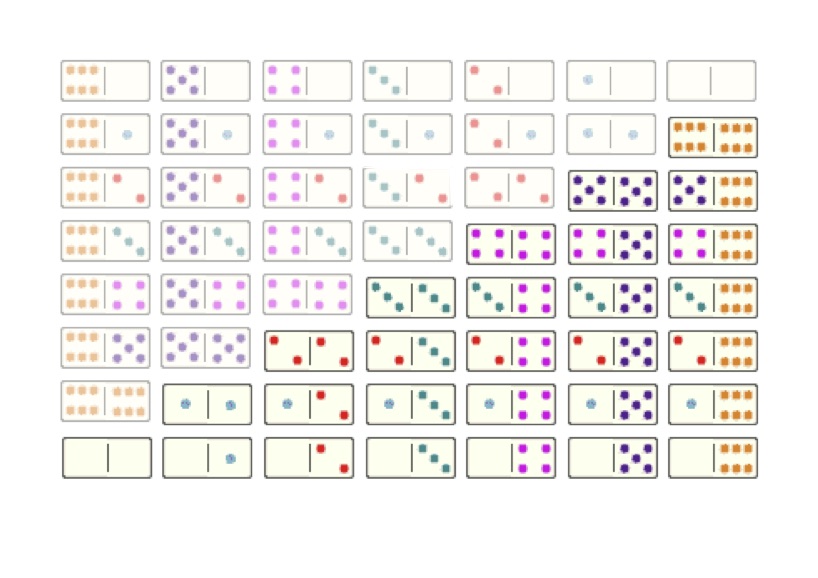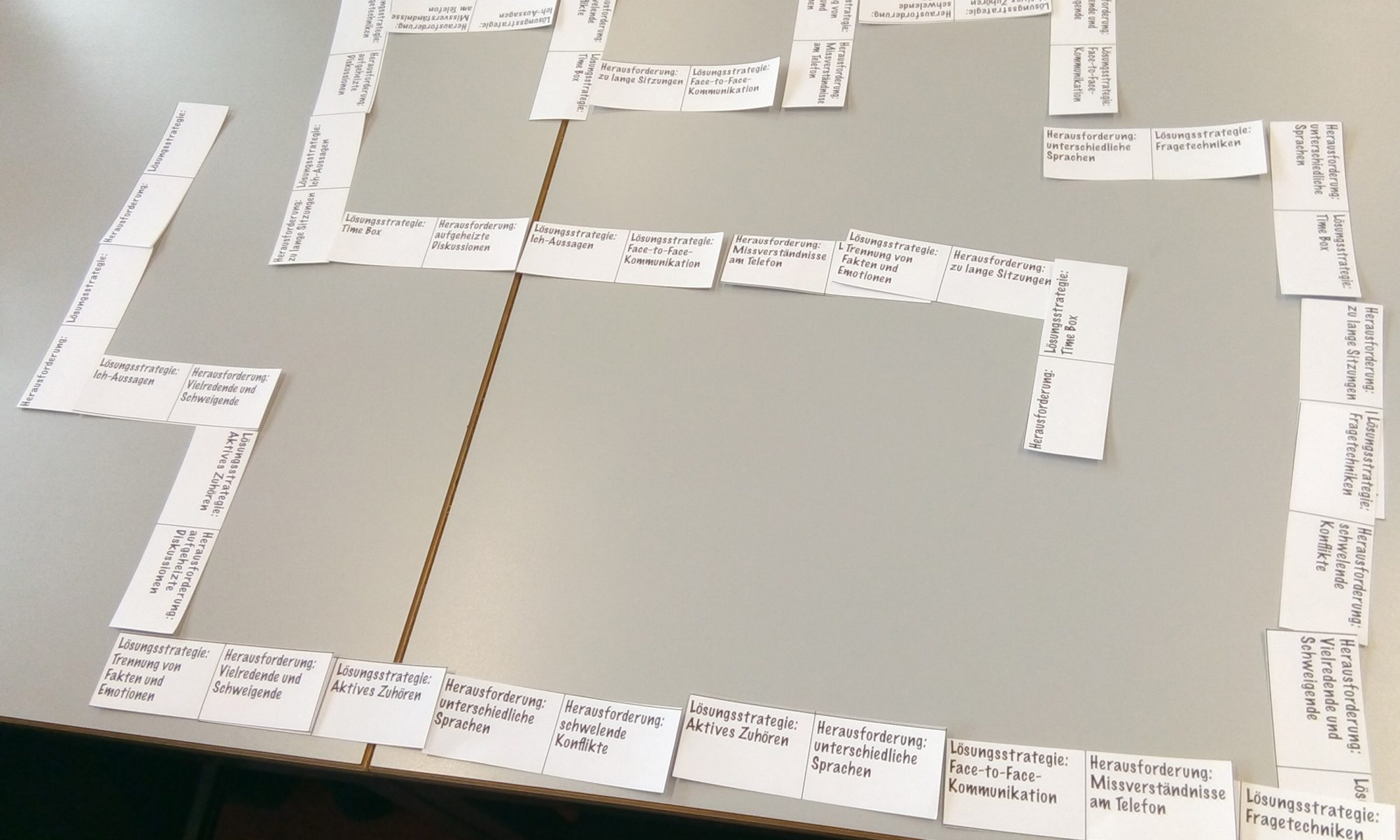I currently experiment with games to show participants of my workshops how communication does (not) work and where the challenges are. The newest prototype is a communications domino. It looks a bit like domino and it works about the same, except… Well, see for yourself.
(Hier gibt es zu diesem Thema einen Beitrag auf Deutsch sowie die Spielanleitung und den Download der Karten zum Ausdrucken.)
The cards are distributed among the players equally, i.e. everyone gets the same amount of cards. You can leave a staple of cards in the middle. One card lies there open. It is the starting point. Everyone now takes turn and tries to attach one of their cards to the loose ends.
The cards have to fields. The either show a communicative challenge or a communicative solution. Goal for the players is it, to lay down their cards, always fitting a challenge with a solution. In contrast to real domino, there is more than one possibility. That means: You can put together different challenges and different solutions. Also, when you stick together a challenge and a solution, you have to shortly tell the others why you think the two are a match. The others might veto, if the argumentation is shortcoming.
If you cannot stick one of your cards to one of the loose ends on the table you have to take a card from the staple in the middle. The first player with no cards left wins.
First experiments show, that there is a lot of fun in this game, since you can argue with all sorts of examples. There are even joker cards with blanks where you can fill in new challenges and solutions. The point of the game is to make people communicate about communication and to reflect on different possibilities within difficult situations.
As for the game prototype: I studied the setup of dominos and tried to get a sufficient set of challenges and solutions. So far I decided to work with two sets of domino and interchange this two sets to get an overall of six challenges and six solutions. These are the following (very briefly explained; original in German):
Challenges:
- aufgeheizte Diskussionen / much emotion in discussion
- Missverständnisse am Telefon / misunderstandings at the phone
- Verständigungsschwierigkeiten wegen unterschiedlichen Sprachen / difficulties because of different languages
- Vielredende und Schweigende / group dynamics with talkative and silent people
- unterschwellige Konflikte / conflicts between people
- lange Sitzungen / long meetings
Solutions:
- Aktives Zuhören / active listening: listen carefully and give signals that you hear and understand what the other person tells you
- face-to-face Kommunikation / face-to-face communication: meet with someone in person
- Fragetechnik / question techniques: ask different questions like open (Why? How?) and closed (yes-or-no) questions
- Ich-Aussagen / I-messages: tell others about how you feel (instead of telling them, what they have done wrong)
- Timebox / timebox: set time frames that cannot be extended
- Fakten vs. Emotionen / facts vs. emotions: divide facts from emotions (and deal with both of them)
A usual domino game consists of the following cards (or tokens):

In the PDF you can find my sets for print. You can print it on A5 sheets 3 times and cut out the cards (just cut through the spaces between the cards – you might use a cutting machine). One set is enough for two to six players.
If you try it out, let me know how it worked…
